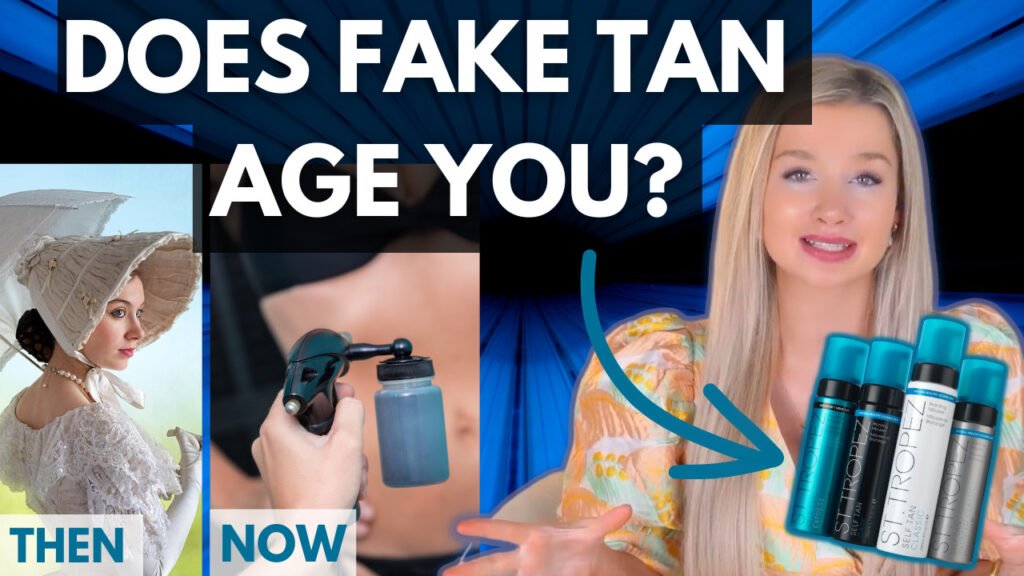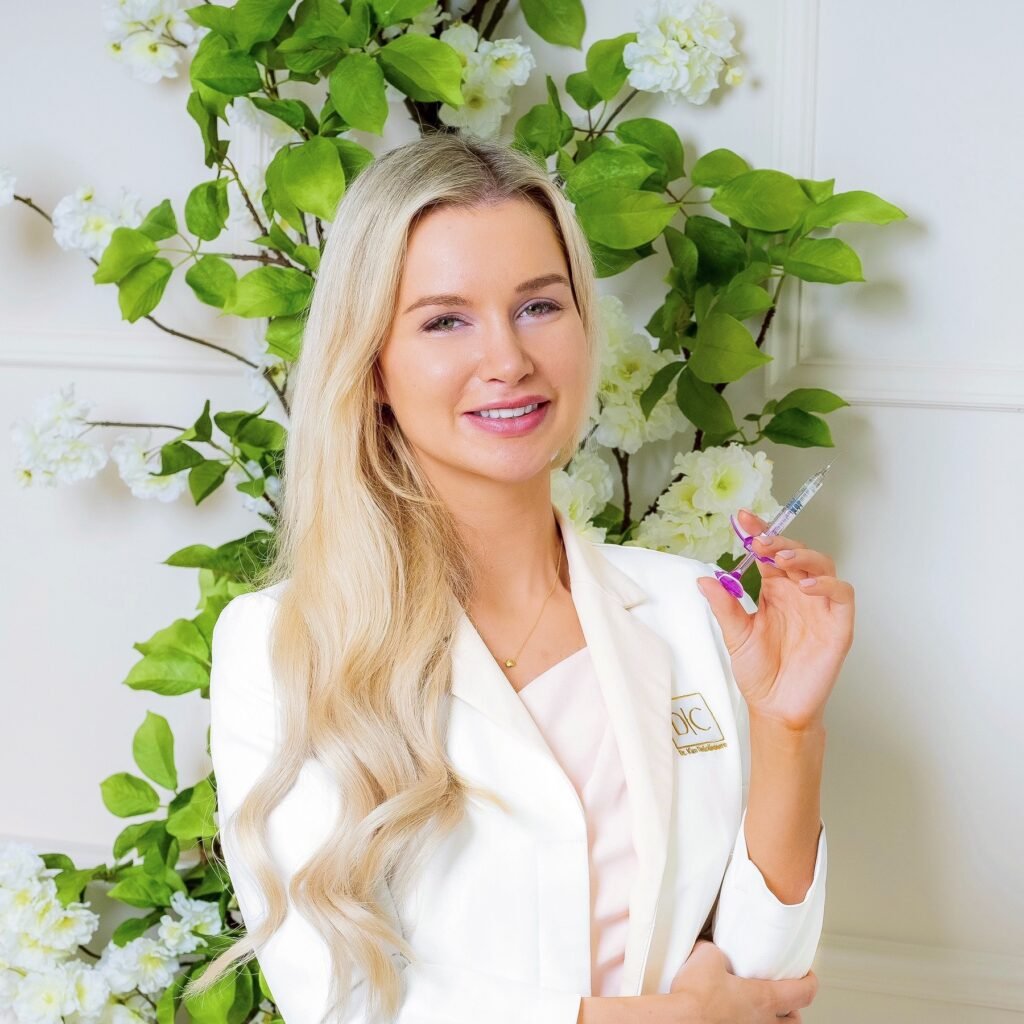DISCLAIMER: I’m not a dermatologist, but I am a medical doctor, beauty enthusiast, and a huge fan of sunless tanning products. That’s why I did some research into the safety of these products and whether they could potentially cause premature aging. I looked into various scientific studies to find my answer.
References used in my research:
- Johnson JA,Fusaro RM.Protection against long ultraviolet radiation: topical browning agents and a new outlook. Dermatologica 1987;175:53-7. Yourick JJ, Koenig ML, Yourick DL, et al. Fate of chemicals in skin after dermal application: does the in vitro skin reservoir affect the estimate of systemic absorption?
- Toxicol Appl Pharmacol. 2004;195:309-320. Beutler E, Guinto E. The metabolism of dihydroxyacetone by intact erythrocytes. J Lab Clin Med. 1973;82:534-545. Ouellette M, Makkay AM, Papke RT.
- Dihydroxyacetone metabolism in Haloferax volcanii. Front Microbiol. 2013;4:376. Akin FJ, Marlowe E. Non-carcinogenicity of dihydroxyacetone by skin painting. J Environ Pathol Toxicol Oncol. 1984;5:349-351.
- Petersen AB, Na R, Wulf HC. Sunless skin tanning with dihydroxyacetone delays broad-spectrum ultraviolet photocarcinogenesis in hairless mice. Mutat Res. 2003;542:129-138.
- Kim SB, Hayase F, Kato H. Desmutagenic effect of alpha-dicarbonyl and alpha-hydroxycarbonyl compounds against mutagenic heterocyclic amines. Mutat Res. 1987;177:9-15.
- Petersen AB, Wulf HC, Gniadecki R, et al. Dihydroxyacetone, the active browning ingredient in sunless tanning lotions, induces DNA damage, cell-cycle block and apoptosis in cultured HaCaT keratinocytes. Mutat Res. 2004;560:173-186.
- Lloyd RV, Fong AJ, Sayre RM. In vivo formation of Maillard reaction free radicals in mouse skin. J Invest Dermatol. 2001;117:740-742.
- Pham HN, DeMarini DM, Brockmann HE. Mutagenicity of skin tanning lotions. J Environ Pathol Toxicol. 1979;3:227-231.
- Yamaguchi T. Mutagenicity of trioses and methyl glyoxan on Salmonella typhimurium. Agric Biol Chem. 1982;46:849-851.
- Follett KA, Johnson JA, Fusaro RM. Protection of photosensitized rats against long ultraviolet radiation by topical application of compounds with structures similar to that of dihydroxyacetone. Dermatologica. 1987;175:58-63.
- Haywood, R. M., & Wardman, P. (1989). The chemistry of melanoidins: some current research questions. Food Chemistry, 31(2), 83-97.
- Faurschou A, Janjua NR, Wulf HC. Sun protection effect of dihydroxyacetone. Arch Dermatol. 2004;140:886-887.
- Jung, K., Seifert, M., Herrling, T., Fuchs, J., & Zastrow, L. (2007). UV-generated free radicals (FR) in skin: their prevention by sunscreens and their induction by self-tanning agents. Spectrochimica Acta Part A: Molecular and Biomolecular Spectroscopy, 66(3), 727-731.
- Dihydroxyacetone (DHA) as used in cosmetic products. (2008). CIR Compendium, 26(1), 1-89.
- Armas LA, Fusaro RM, Sayre RM, et al. Do melanoidins induced by topical 9% dihydroxyacetone sunless tanning spray inhibit vitamin d production? A pilot study. Photochem Photobiol. 2009;85:1265-1266.
- Mahmoud, B. H., & Hexsel, C. L. (2010). Aging and photoaging: a comprehensive review. Journal of Cosmetic Dermatology, 9(4), 260-270.
- Nilsen LT, Hannevik M, Veierød MB, et al. Protection against ultraviolet A-induced oxidative damage in human skin by dihydroxyacetone. Photodermatol Photoimmunol Photomed. 2010;26(1):32-37.
- Morren M, Dooms-Goossens A, Heidbuchel M, et al. Contact allergy to dihydroxyacetone. Contact Dermatitis. 1991;25:326-327.
- Lindqvist PG, et al. Photodermatol Photoimmunol Photomed. 2012 Apr;28(2):58-62).
- “Self-Tanners and Bronzers.” American Academy of Dermatology. https://www.aad.org/public/everyday-care/sun-protection/sunscreen-patients/self-tanners-bronzers
- “Dihydroxyacetone.” Cosmetics Info. https://cosmeticsinfo.org/ingredient/dihydroxyacetone
- “Self-tanners: Can they prevent premature aging?” Harvard Health Publishing. https://www.health.harvard.edu/staying-healthy/self-tanners-can-they-prevent-premature-aging
- “The Maillard reaction in vivo.” The Journal of Investigative Dermatology. https://www.ncbi.nlm.nih.gov/pmc/articles/PMC2688146/
- “Sunless Tanning Products.” U.S. Food and Drug Administration. https://www.fda.gov/cosmetics/cosmetic-products/sunless-tanning-products
- “Consumer Survey on Cosmetic Products.” Harris Poll. https://www.harrisinteractive.com/insights/skin-care-in-america-2017
- “The safety of dihydroxyacetone (DHA) for use in sunless tanning products.” U.S. Food and Drug Administration. https://www.fda.gov/cosmetics/cosmetic-ingredients/dihydroxyacetone-dha
- Bovenschen HJ, Korver JE, van der Valk PG. Contact dermatitis to self-tanning products. Contact Dermatitis. 2009;60:290-291.



